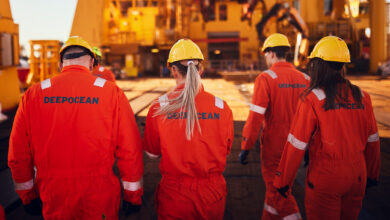Apergy and ChampionX complete merger
ChampionX Corporation, formerly known as Apergy Corporation, announced the completion of the merger of the businesses of Apergy Corporation and ChampionX Holding Inc. In association with this transaction, Apergy has changed its name to ChampionX Corporation, and beginning tomorrow, its shares of common stock will trade on the New York Stock Exchange under the symbol “CHX”.
“Today we are proud to launch ChampionX, a company that will be an essential player and long-term winner in the oil and gas industry,” Sivasankaran Somasundaram, President and Chief Executive Officer of ChampionX, said. “Our combined company will be a strong and resilient organization with a broad geographic footprint, high-quality customer base, and significant recurring revenue. The combination enables us to bring together a unique platform with best-in-class product lines in artificial lift, production chemicals, and digital technology delivered with superior service capabilities to provide the full spectrum of production-optimization solutions to our customers. Our 7,000-plus talented employees around the world will continue to work collaboratively to solve problems for our customers. Financially, the successful completion of this transaction results in a company with sustainable strong free cash flow generation and has an immediate deleveraging benefit for the Company’s balance sheet. We will immediately implement our plans to capture the $75 million in expected cost synergies, plus additional revenue growth opportunities made possible by the complementary product, geography, and customer profiles of the combined organization.”
“I am delighted to welcome Heidi Alderman and Stu Porter to the ChampionX board of directors,” Mr Somasundaram added. “They are both highly qualified individuals and we will greatly benefit from their experience and guidance. We are excited about our future as ChampionX, and as we begin our journey, we will be guided by our purpose of improving lives and supported by our foundation of a strong culture and operating principles.”
The transaction resulted in existing ChampionX Holding Inc. equity holders owning approximately 62% of ChampionX on a fully diluted basis, with Apergy equity holders prior to the merger owning approximately 38% of ChampionX on a fully diluted basis.
In addition to the seven directors which formed the board of directors of Apergy Corporation prior to the completion of the transaction, ChampionX appointed Ms Alderman and Mr Porter to its board of directors.
Ms Alderman is the former Senior Vice President, Intermediates of BASF Corporation, a position she held from 2016 until her retirement in 2019. Prior to this role, Ms Alderman held the positions of Senior Vice President, North American Petrochemicals from 2011 to 2016; Senior Vice President, North American Procurement from 2008 to 2011; Vice President, Functional Polymers from 2005 to 2008; and Business Director, Polymers from 2003 to 2005.
Ms Alderman’s also holds a Bachelor’s Degree in Chemical Engineering from Stevens Institute of Technology and a Master’s Degree in Chemical Engineering from Drexel University. Ms Alderman has held various positions in business, operations, research, procurement, product and marketing management at BASF, Air Products and Chemicals Inc. and Rohm and Haas, in addition to completing the University of Pennsylvania Wharton Management Program in business administration, providing a global business management perspective to the board.
Ms. Alderman has served on the Board of Olin Corporation since 2019 where she is a member of the Directors and Corporate Governance Committee.
Mr Porter founded Denham Capital in 2004 and is a Managing Partner as well as Denman’s Chief Executive Officer and Chief Investment Officer. Mr Porter holds a Bachelor’s of Arts from the University of Michigan and a Master’s of Business Administration from the University of Chicago Booth School of Business.
Mr Porter brings three plus decades of experience evaluating, investing and advising companies all along the energy value chain. In his current and previous roles, he has overseen the management of 40 upstream, midstream and oilfield service companies representing in excess of $3.5 billion of invested capital. Additionally, Mr Porter has global experience through managing offices in London and Perth, Australia for Denham Capital as well as deploying investment capital across more than 25 portfolio companies in Africa, Australasia, and North and South America.




